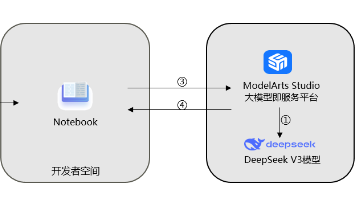阿里云存储OSS文件上传详细教程
OSS
·
官方基本用法
1、在阿里云进行注册,创建一个Bucket
2、各个版本的操作文档
3、导入依赖
<dependency>
<groupId>com.aliyun.oss</groupId>
<artifactId>aliyun-sdk-oss</artifactId>
<version>3.10.2</version>
</dependency>
4、生成子账户,用于后台登陆阿里云OSS




5、测试demo
public static void main(String[] args) throws FileNotFoundException {
// yourEndpoint填写Bucket所在地域对应的Endpoint。以华东1(杭州)为例,Endpoint填写为https://oss-cn-hangzhou.aliyuncs.com。
String endpoint = "oss-cn-shanghai.aliyuncs.com";
// 阿里云账号AccessKey拥有所有API的访问权限,风险很高。强烈建议您创建并使用RAM用户进行API访问或日常运维,请登录RAM控制台创建RAM用户。
String accessKeyId = "LTAI5tD8ACw25Nd3Ppq5U1Fq";
String accessKeySecret = "30niIcJE6qcRYjrc9cqFeFeKcV8IEt";
// 创建OSSClient实例。
OSS ossClient = new OSSClientBuilder().build(endpoint, accessKeyId, accessKeySecret);
// 填写本地文件的完整路径。如果未指定本地路径,则默认从示例程序所属项目对应本地路径中上传文件流。
InputStream inputStream = new FileInputStream("C:\\Users\\liaoz\\Desktop\\1630417064.jpg");
// 依次填写Bucket名称(例如examplebucket)和Object完整路径(例如exampledir/exampleobject.txt)。Object完整路径中不能包含Bucket名称。
ossClient.putObject("gulimail-liaozk", "oss测试.jpg", inputStream);
// 关闭OSSClient。
ossClient.shutdown();
System.out.println("上传完成。。。。。");
}
6、验证


进阶用法
1、引入依赖
<!-- oss配置 -->
<dependency>
<groupId>com.alibaba.cloud</groupId>
<artifactId>aliyun-oss-spring-boot-starter</artifactId>
</dependency>
<dependency>
<groupId>com.alibaba.cloud</groupId>
<artifactId>spring-cloud-starter-alicloud-oss</artifactId>
</dependency>
<!-- 加入dependencies中,不然报错-->
<dependency>
<groupId>com.alibaba.cloud</groupId>
<artifactId>spring-cloud-alibaba-dependencies</artifactId>
<version>2.1.0.RELEASE</version>
<type>pom</type>
<scope>import</scope>
</dependency>
2、配置key、\endpoint相关信息即可
spring:
main:
allow-bean-definition-overriding: true
application:
name: gulimall-third-party
cloud:
nacos:
discovery:
server-addr: 192.168.56.10:8848
alicloud:
access-key: LTAI5tD8ACw25Nd3Ppq5U1Fq
secret-key: 30niIcJE6qcRYjrc9cqFeFeKcV8IEt
oss:
endpoint: oss-cn-shanghai.aliyuncs.com
bucket: gulimail-liaozk
3、使用 OSSClient 进行相关操作
@RestController
public class OssController {
@Autowired
OSS ossClient;
@Value("${spring.cloud.alicloud.oss.endpoint}")
private String endpoint;
@Value("${spring.cloud.alicloud.oss.bucket}")
private String bucket;
@Value("${spring.cloud.alicloud.access-key}")
private String accessId;
@RequestMapping("/oss/policy")
public R policy(){
//https://gulimail-liaozk.oss-cn-shanghai.aliyuncs.com/oss测试.jpg?versionId=CAEQKBiBgICdv9Hy3BciIDRhZWJhYjJhODRjZTQwZGFiNDZmMTlmNmNjNGVjMGYx
String host = "https://" + bucket + "." + endpoint; // host的格式为 bucketname.endpoint
// callbackUrl为上传回调服务器的URL,请将下面的IP和Port配置为您自己的真实信息。
//String callbackUrl = "http://88.88.88.88:8888";
String format=new SimpleDateFormat("yyyy-MM-dd").format(new Date());
String dir = format+"/"; // 用户上传文件时指定的前缀。
Map<String,String> respMap=null;
try {
long expireTime = 30;
long expireEndTime = System.currentTimeMillis() + expireTime * 1000;
Date expiration = new Date(expireEndTime);
// PostObject请求最大可支持的文件大小为5 GB,即CONTENT_LENGTH_RANGE为5*1024*1024*1024。
PolicyConditions policyConds = new PolicyConditions();
policyConds.addConditionItem(PolicyConditions.COND_CONTENT_LENGTH_RANGE, 0, 1048576000);
policyConds.addConditionItem(MatchMode.StartWith, PolicyConditions.COND_KEY, dir);
String postPolicy = ossClient.generatePostPolicy(expiration, policyConds);
byte[] binaryData = postPolicy.getBytes("utf-8");
String encodedPolicy = BinaryUtil.toBase64String(binaryData);
String postSignature = ossClient.calculatePostSignature(postPolicy);
respMap = new LinkedHashMap<String, String>();
respMap.put("accessid", accessId);
respMap.put("policy", encodedPolicy);
respMap.put("signature", postSignature);
respMap.put("dir", dir);
respMap.put("host", host);
respMap.put("expire", String.valueOf(expireEndTime / 1000));
// respMap.put("expire", formatISO8601Date(expiration));
} catch (Exception e) {
// Assert.fail(e.getMessage());
System.out.println(e.getMessage());
} finally {
ossClient.shutdown();
}
return R.ok().put("data",respMap);
}
}
使用是可能会出现跨域情况,参照官方文档
更多推荐
 已为社区贡献3条内容
已为社区贡献3条内容









所有评论(0)